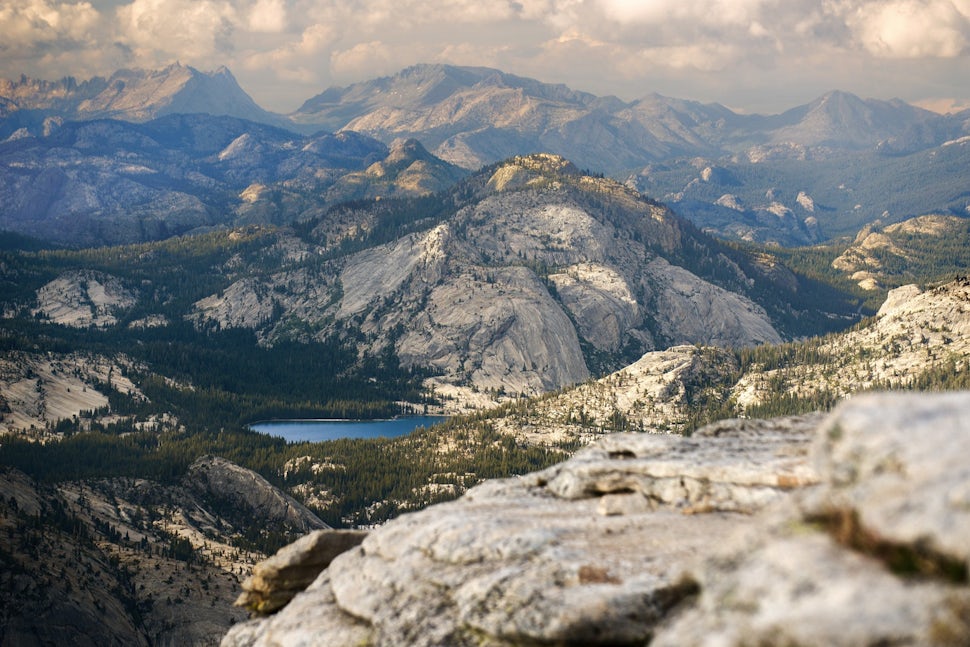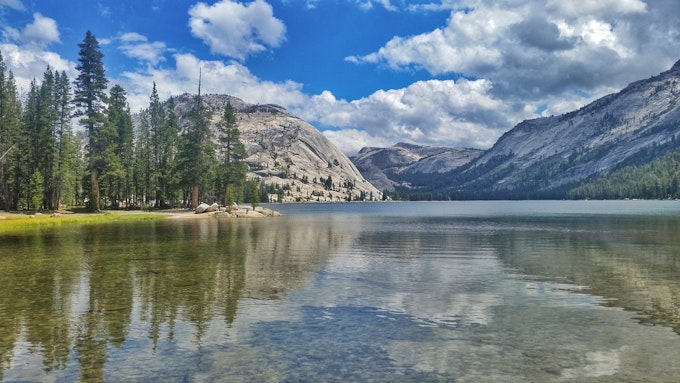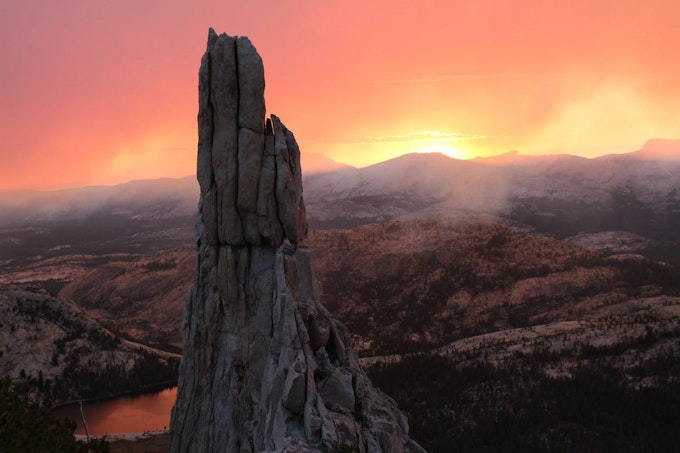What you need to know for a summer trip to Yosemite National Park

Yosemite National Park is a California gem that offers hiking, climbing, and incredible views. Don’t know where to start when planning your Yosemite excursion? We got you.
Location: East-Central California’s Sierra Nevada mountains
Known for: Giant, ancient sequoia trees, towering granite cliffs, and iconic waterfall vistas
Reservations/Permits
If you are planning on driving a vehicle into or through Yosemite National Park during peak hours (6am-4pm) May 20th through Sept. 30th, 2022, you will need to make a reservation and have a photo ID. Reservations can be made for a campground or other lodging option in the park, a wilderness permit, a Half Dome permit, special use permit, etc. Check out the full list here. More on wilderness permits here.
Why do I need a reservation? The reservation system helps reduce congestion, giving you a more quality experience when you visit! Note that the reservation system limits the number of vehicles, but not the number of people allowed in the park while various infrastructure projects are in progress to help repair and improve certain attractions.
If you drive into the park during non-peak hours (before 6am and after 4pm), then you do not need a reservation. You will, however, still need to pay a vehicle entrance fee ($35/car). You also do not need a reservation if you enter the park via a Yosemite Area Regional Transportation System, bicycle, foot, horseback, etc. But again, the entrance fee still applies.
Where do I enter the park?
So, you’re convinced to make the trip to the unforgettable Yosemite National Park. But first things first, where should you arrive? With a park so large, there are 5 entrances. But, great news! The roads to each offer some pretty incredible views that will make the part before arriving just as enticing!
Four of the entrances are on the western side of the park and the fifth (Tioga Pass) is on the eastern side.
- Hetch Hetchy Entrance– located farthest north on the west side, leads to a quieter area of the park, access it via highway 120, open year round
- Big Oak Flat Entrance– most direct route from the Bay Area, take I-150 east to I-205 east to Highway 120
- Arch Rock Entrance– another fast route coming from the San Francisco area, take I-580 east to I-205 east to Highway 140
- South Entrance– closest entrance from San Diego or the Los Angeles Area, accessed by Highway 41
- Tioga Pass Entrance– fastest route from the Lake Tahoe area, Las Vegas or Death Valley, can access via Highway 120, open May through October
Public Transportation
If you don’t plan on driving your own vehicle into the park, there are other options that can help you get where you want to go:
- Yosemite Valley Shuttle
- Mariposa Grove Shuttle
- Tuolumne Meadows Tour and Hikers Bus (reservations recommended)
- YARTS regional transit (reservations recommended)

Types of Campsites
*There are no first-come, first-served campgrounds available in 2022. Reservations are required and should be acquired in advance as they can be rather difficult to secure.
Campgrounds
Open: Wawona, Upper Pines, Lower Pines, North Pines, Camp 4, Hodgdon Meadow, Tamarack Flat, White Wolf, Yosemite Creek
Closed in 2022: Tuolumne Meadows, Crane Flat, Bridalveil Creek, Porcupine Flat
RV campsites
There are 10 campgrounds that can accommodate RVs and trailers. You must be in one of these locations if you plan on staying overnight. You cannot park in a parking lot or on the side of the road.
Note that the maximum RV length is 40 feet and maximum trailer length is 35 feet in Yosemite Valley. Eight of the 10 sites will accommodate these sizes. Check in advance to make sure you are choosing a site that will accommodate your camper.
Electrical, water, and sewer hookups are not available and generator use is only allowed during certain times (7am-9am, 12pm-2pm, and 5pm-7pm).
Group campsites
All year option: Wawona Campground
Summer options: Hodgdon Meadow
Horse campsites
Summer option: Wawona
Check out more helpful campground details from the National Park Service here.
I’d rather sleep indoors…
Unique and comfortable lodging options within or near the park are available too!
Wildlife
Nature lovers will be pleased to know that Yosemite is home to over 400 species of wildlife from mammals to birds, reptiles and more. Keep your eyes peeled on the open trail ahead and high in the sky. You never know what you might check off your wildlife sighting checklist!
Be on the lookout for black bears, Sierra Nevada bighorn sheep, bobcats, coyotes, mountain lions, Pacific fishers, and the Sierra Nevada red fox– to name some of the many possibilities!
Fun fact: The name “black bear” can be quite misleading. The hundreds of black bears that roam Yosemite have blond, brown, or black fur.
Please remember while it’s wonderful to admire these beautiful creatures, they are wild animals who should be respected and left alone. They can be dangerous, so keep a safe distance and come prepared with useful safety items like bear spray.

Adventures
From hiking to climbing, camping, backpacking, river rafting, and more… you won’t find yourself at a loss for things to enjoy in the outdoors here. It truly is an outdoor lover's playground. Looking for adventure ideas? Try these!
Thru Hike the Full John Muir Trail
Sunrise Lakes to Clouds Rest in Yosemite
Scramble Yosemite’s Cathedral Peak
Water sources
Treat any river or lake water before drinking to protect yourself from potential waterborne diseases. It is recommended to boil water for at least 3 minutes to disinfect it or use a reliable filter that can remove protozoa and bacteria. Further treat the water even after filtration with 2 drops of chlorine bleach per roughly 1 liter of water for 30 minutes to kill potential viruses.
Avoid drinking from any sources that contain large clumps of algae. Harmful algal blooms produce toxic compounds that can threaten our health and ecosystem.
Alternatively, there are a number of places to get safe drinking water from fountains and stations located throughout the park! You can find them at visitor centers, outside of stores, and in bathrooms. There are also several places in Yosemite Village where you can buy bottled water.
Cover Photo: Nathaniel Polta
We want to acknowledge and thank the past, present, and future generations of all Native Nations and Indigenous Peoples whose ancestral lands we travel, explore, and play on. Always practice Leave No Trace ethics on your adventures and follow local regulations. Please explore responsibly!
Do you love the outdoors?
Yep, us too. That's why we send you the best local adventures, stories, and expert advice, right to your inbox.








